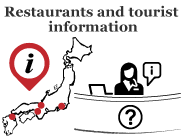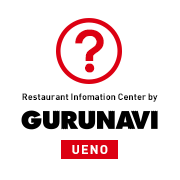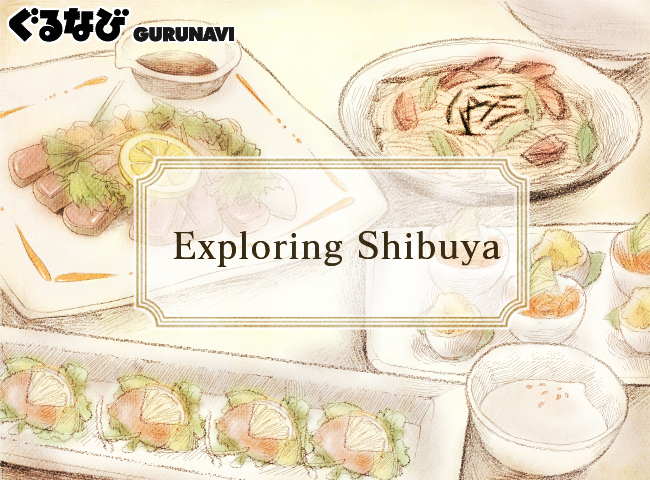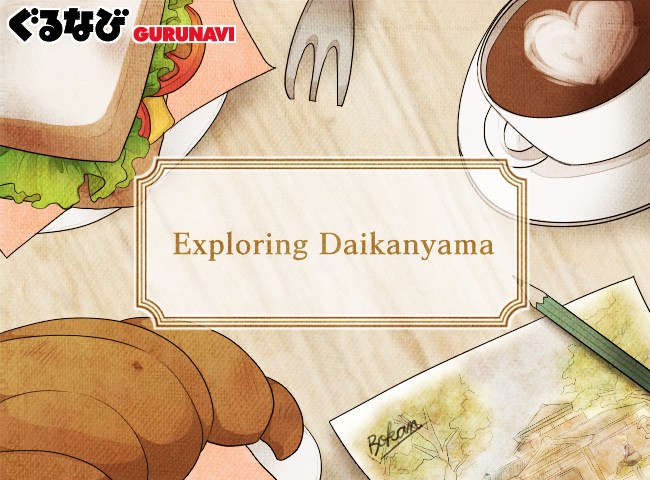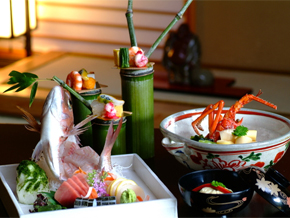Delicious Dishes of the Kanto Region: Monjayaki, Yuba & More


The Kanto region of eastern Japan is home to Japan’s metropolitan capital, Tokyo, as well as six other prefectures—Kanagawa, Saitama, Chiba, Ibaraki, Gunma, and Tochigi, each with their own delicious and distinct kinds of food. Kanto cuisine is known for being more strongly flavored than food from the Kansai region of western Japan, but is just as delicious. As the most populated region in Japan, with over 42 million people, food from Kanto appeals to a wide variety of people. Here are 10 dishes that explore the various tastes that can be found in the Kanto region.
10 Tantalising Dishes That Show Why Kanto Food Is Another Japanese Regional Cuisine Worth Trying!
Monjayaki (Tokyo)
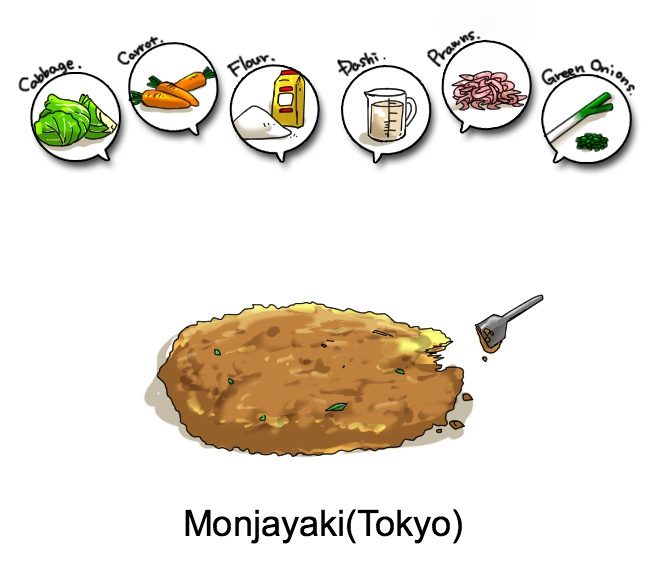
Many people are familiar with the savory pancake-like dish from western Japan called okonomiyaki, but did you know that the Kanto region has its own equivalent called “monjayaki”? Ingredients like cabbage, carrots, prawns, squid, and corn are cooked on an open griddle and formed into a ring with an open center. Runny batter is poured into this open space and cooked with small metal spatulas, which are then used to scoop up and eat this batter. It’s a salty fried dish that’s fun to eat in a group.
Yuba (Tochigi)

Yuba is a thin beancurd skin collected from the surface of soy milk during the tofu making process. It can be served raw or cooked and has a delicate flavor with a light soybean taste. The texture of raw yuba is sometimes compared to mozzarella cheese, while dried yuba has a slightly chewy texture and is typically fried, boiled, or served in soup. In Nikko, you can try yuba in all kinds of local delicacies, from fried yuba croquettes, to yuba ramen and soba, to even yuba ice cream!
Yaki Manju (Gumna)
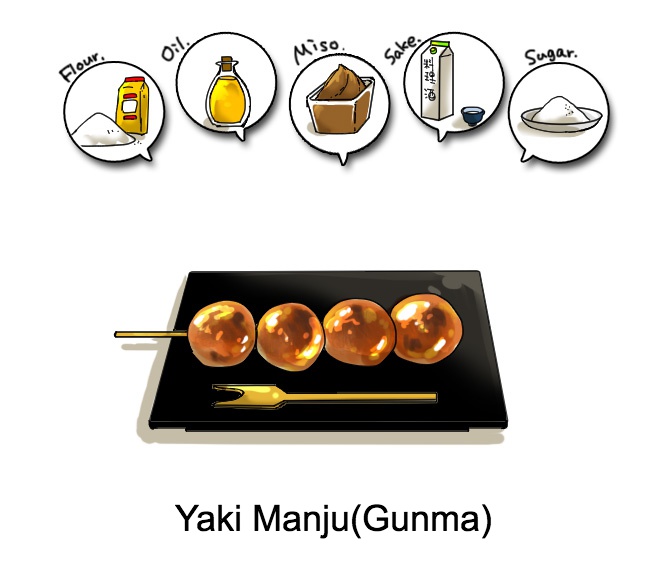
Manju is a traditional Japanese sweet consisting of steamed dough filled with anko (sweet red bean—not monkfish!) paste. It originated in China and has been produced in Gunma for many generations, where there is a special tradition of roasting plain steamed manju to make yaki manju. The steamed manju are basted in a spicy but sweet miso sauce as they’re roasted over a charcoal flame, giving them a fluffy texture and enticing aroma.
Namero (Chiba)

A traditional fisherman’s dish from Chiba prefecture, namero is roughly chopped fish mixed with ginger, miso, green onion, vinegar, and other condiments. The dish is said to be named for the Japanese word “nameru”, meaning “to lick”, because it’s so delicious that you’ll want to lick your plate. The condiments help neutralize any strong fishy odors, which makes namero a good option for those who don’t like to eat sashimi or other raw fish. Namero can also be fried and eaten with fresh perilla herbs, or it can be served on top of rice with green tea poured over in a traditional dish called “ochazuke”.
Yokosuka Kaigun Curry (Kanagawa)
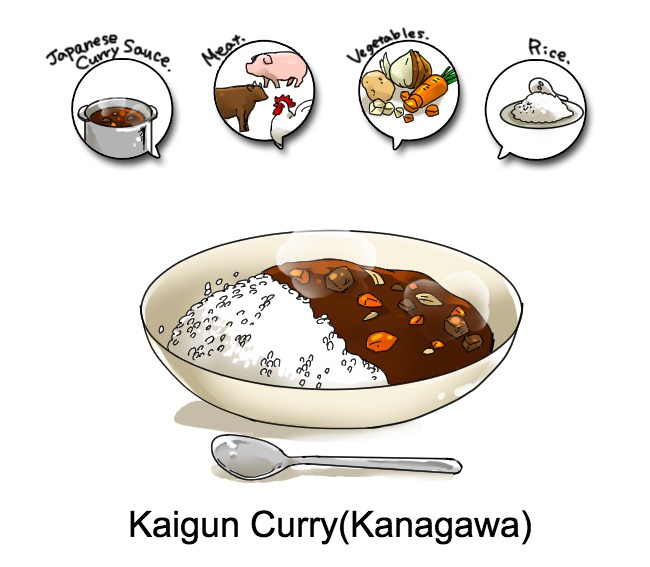
Yokosuka city in Kanagawa is famous for its curry culture, as well as for being the former home of the Japanese Imperial Navy, or kaigun, which founded the tradition of eating curry every week. Today, Yokosuka is home to the Japan Maritime Self-Defense Force, which still maintains the tradition of eating “kaigun curry” every week. Japanese curry has a sweet flavor and a stew-like texture that’s very different from rich tangy and creamy Indian curries or fresh and spicy East Asian curries. Kaigun curry is eaten with short-grained rice and Japanese pickles.
Gyoda Zeri Furai (Saitama)

Zeri Furai (“Jelly Fry”) is a fried food from the city of Gyoda in Saitama prefecture that actually has nothing to do with jelly. It’s a croquette made from steamed potato, okara (soybean pulp that’s a byproduct of the tofu-making process), diced green onion and carrot, mixed together and molded into an oval-shaped patty. The patty is deep fried and dipped in Worcestershire sauce. While zeri furai is not well known outside of Saitama, there are many small shops around Gyoda city specializing in this deep-fried treat.
Anko Nabe (Ibaraki)

Anko nabe is a winter delicacy from Ibaraki prefecture that consists of anko (monkfish or angler fish) in a hotpot stew. Anko is a type of deep sea fish caught off the coast of Ibaraki that must be extremely fresh when eaten. For this reason, before modern refrigeration techniques were available, anko nabe was a delicacy that people in Japan could only enjoy in Ibaraki prefecture. Ankimo, or monkfish liver, is also highly prized and gets frequently compared to foie gras.
Fukagawa Meshi (Tokyo)
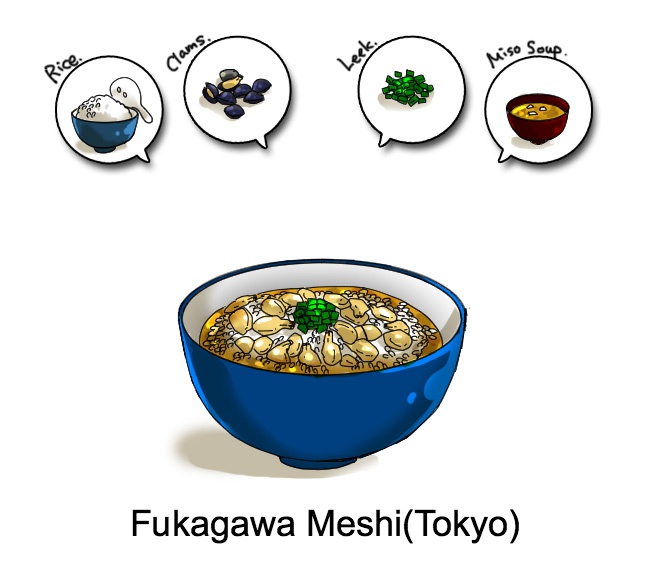
Fukagawa meshi is a spring dish of fat clams and leeks cooked in a rich miso broth and served over rice. It’s a dish that originated during the Edo period in the Fukagawa area of Tokyo, where a bustling fishing and clam harvesting trade sprung up at the mouth of the Sumida River. If you walk around Fukugawa today, you can find a few local restaurants serving home-cooked versions of this dish. You can also enjoy the old town atmosphere of the neighborhood and may even spot a sumo wrestler or two as there are several sumo training stables nearby.
Gokabo (Saitama)

A simple yet elegant sweet made from toasted soybean flour, gokabo is one of the top three snacks of Saitama prefecture. It’s handmade by local patissiers who roll glutinous white rice in sweet kinako soybean flour to form a small, cylindrical rice cake. The rolls are cut and stacked in a pyramid shape.
Hiyajiru Udon (Saitama)

Hiyajiru udon is a type of traditional flour noodle prepared with local ingredients. It’s so popular in the Saitama area that for many people it replaces rice as their daily starch, especially during the summertime. Enjoy cold hiyajiru udon noodles by dipping them into a soup of dashi broth, miso paste, and sesame seeds. It’s a refreshing summer dish that tastes great with thinly sliced cucumber.
Make Monjayaki, Namero and Other Food of the Kanto Region Part of Your Unique Japanese Food Experiences!
The Kanto region has a wide variety of delicious foods that vary from prefecture to prefecture. Many of these popular local dishes originated during the Edo period, when Kanto became the center of modern development in Japan. For your next visit to Tokyo and the surrounding Kanto area, be sure to check out our list of restaurants offering these tasty regional foods. Itadakimasu!


